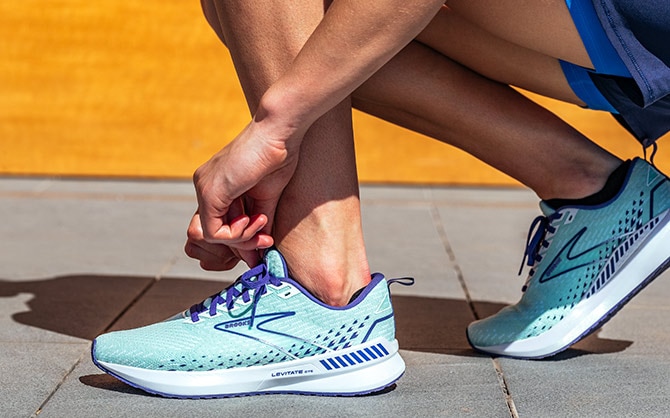How to break in running shoes when you just can't wait to run

After waiting for what seems like ages, your doorbell finally rings. You know your new running shoes have just been delivered. In your excitement, you rip open the box and start lacing up for a run.
Not so fast, though. You'll want to learn how to break in running shoes before you can test them on a long run. Even if you tried your shoes on in-store, breaking them in before you go all out could help prevent injury and make for happier, comfier runs.
Take a crawl, walk, run approach
OK, maybe you can skip the crawl, but the most important part of the break-in process is taking it slow. Your feet need time to adjust to your new shoes.
After your first lace-up, take time to walk around the house so your feet and shoes can get to know each other a bit. Then, take them out for a short run, no longer than 20–30 minutes, to test how they feel. Check for any pain or discomfort. If there are no problems, you can steadily increase your run time and intensity over the next couple of weeks.
Don't ditch your old shoes just yet
If you have a broken-in pair of running shoes that still have some life, keep them around a little longer. Even once you break in your new shoes, you may want to keep your previous pair around as long as it's not time to replace them (after around 500–800 km of use).
Rotating between different pairs of running shoes can help distribute impact forces to lessen the strain on your body. A study published in the Scandinavian Journal of Medicine & Science in Sports found that runners who used multiple pairs of running shoes had a 39% lower risk of running-related injuries compared to runners who used only one pair.

Good socks count
Don't let a bad sock ruin a good shoe. As you're breaking in your running shoes, make sure you're also wearing proper running socks — opt for synthetic technical fabrics like polyester with cooling technology for hot summer runs or wool blends for wintertime. Avoid cotton, because once it gets wet and sweaty, it'll stay that way. No one likes sloshy shoes, chafing, or blisters.
So, are these the right shoes?
Once your new shoes have gotten some use, pay attention to how they make you feel. Blisters, pain, or any type of discomfort are signs that you may not be running in the best shoe or the correct size. Running is a full-body workout, so pay attention to any unusual discomfort in the rest of your body, too.
Your shoes can feel a bit stiff and foreign during your first few runs, and that's okay. But if those bad feelings continue, you might want to check the return policy. There's another pair out there just for you.
Now that you know how to break in running shoes, you can rest assured that you've set yourself up for safer, snugger runs going forward.
Our writer's advice is intended for informational or general educational purposes only. We always encourage you to speak with your physician or healthcare provider before making any adjustments to your running, nutrition, or fitness routines.

